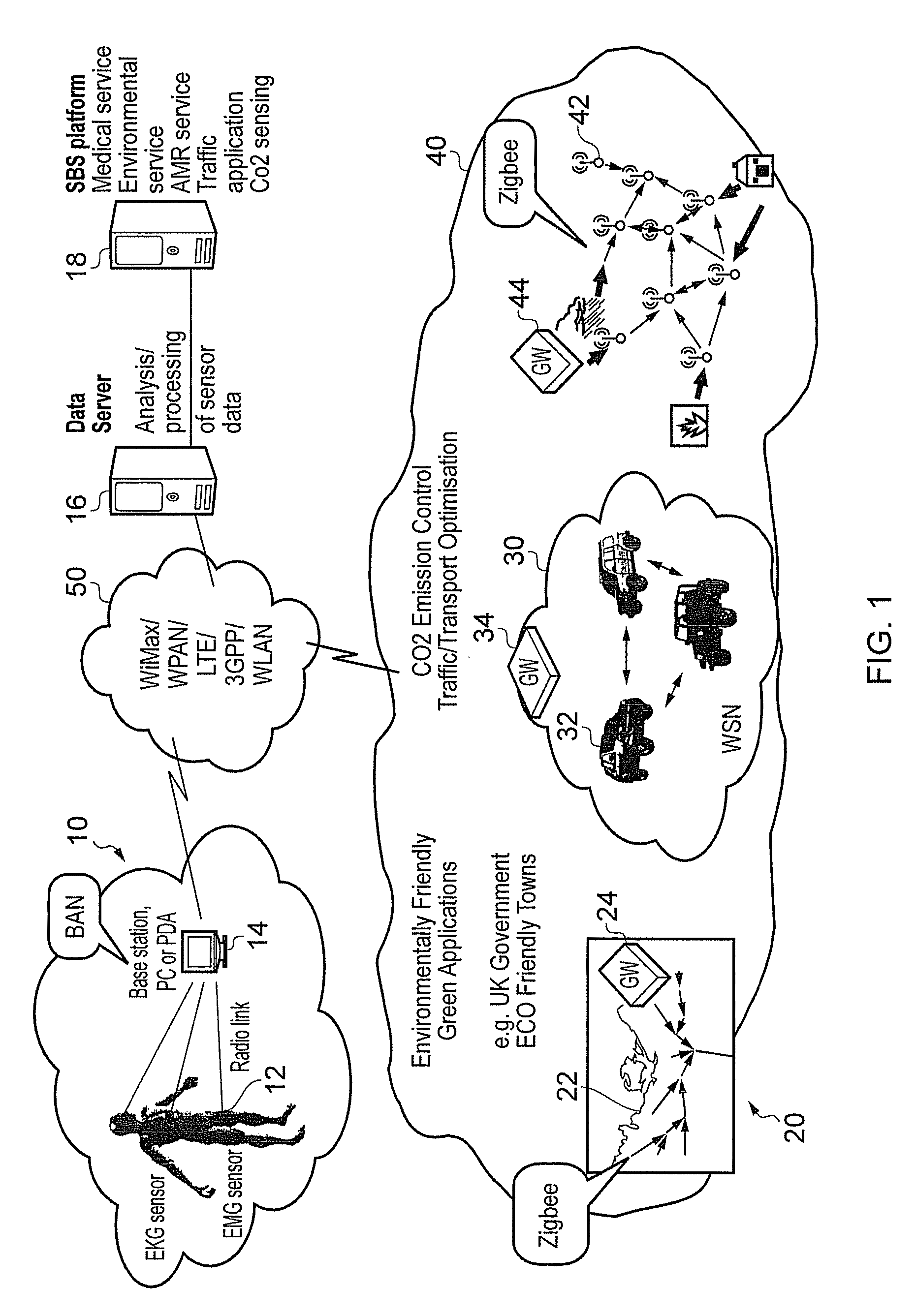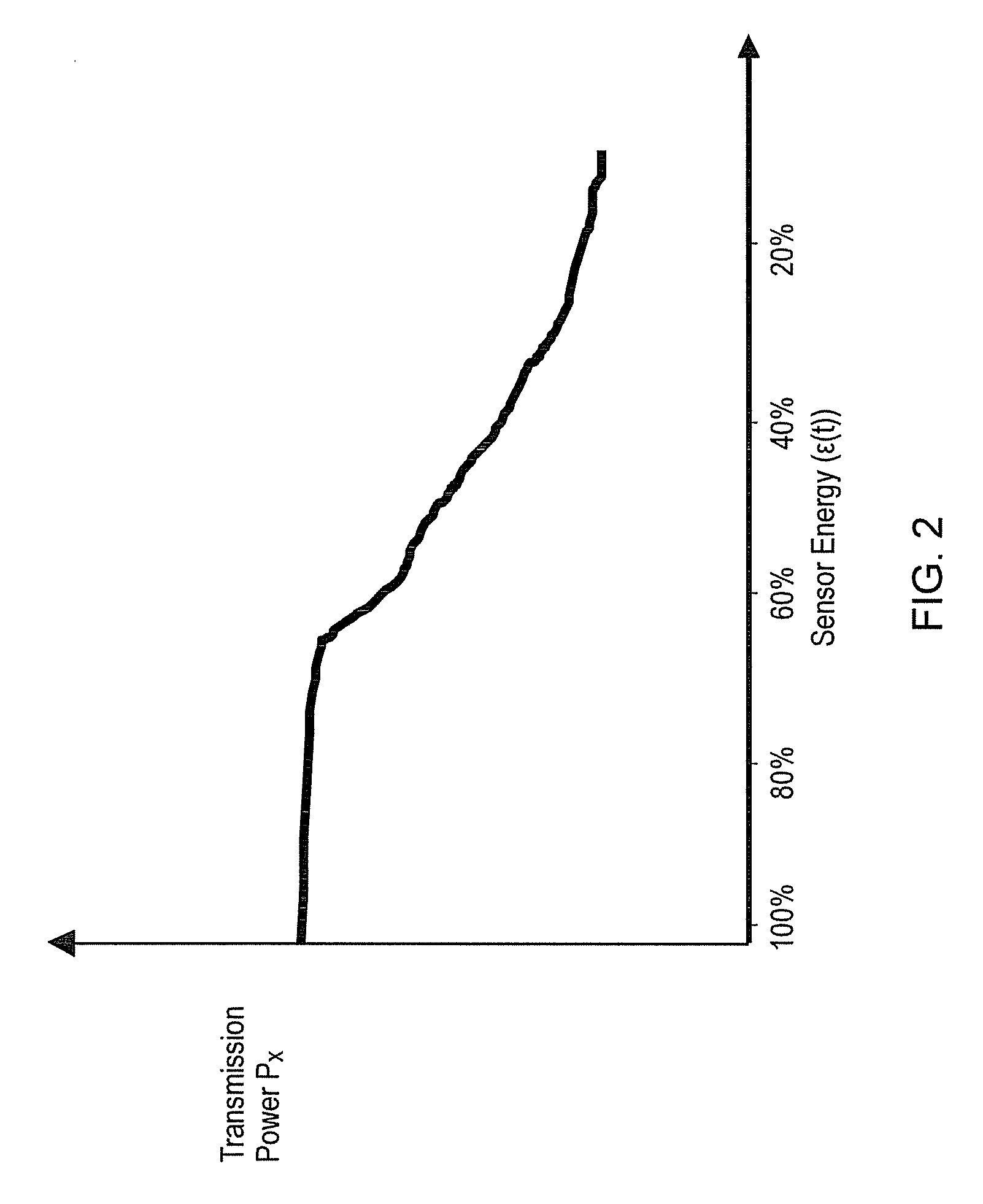Wireless sensor networks
a sensor network and wireless technology, applied in the direction of electric signalling details, instruments, transportation and packaging, etc., can solve the problems of low computational ability, the most power-hungry function of the transmission of data, and the major consideration of the power consumption of the sensor
- Summary
- Abstract
- Description
- Claims
- Application Information
AI Technical Summary
Benefits of technology
Problems solved by technology
Method used
Image
Examples
embodiment
GENERAL EMBODIMENT
[0056]A general embodiment of the present invention will now be described with reference to FIG. 4 which shows steps of a sink positioning method in a WSN. The network allows for the sink to be independently mobile, and its position to be controllable. This may be achieved, for example by mounting a sink device on a controllably moveable support, such as a vehicle or robot, or on a runner which can be translated along one or more tracks or lines. In embodiments of the present invention, the sink 70 can thus be considered as a “mobile” sink device, which is dynamically repositioned according to the method described. The method starts with the WSN already functioning. That is, the mobile sink sends and receives data as necessary to gather information from live sensors in the WSN and forward it appropriately towards an outside entity. At the start of the relocation method, candidate sink locations are selected by the sink in step S10. This selection process may for ex...
first embodiment
[0059]A first specific embodiment of the present invention will now be described with reference to FIGS. 5 to 9 showing steps of a sink positioning method.
[0060]The first embodiment takes into account changes of the maximum transmission rate I(t) for the communication links between the sensor and the sink. Changes in I(t) occur due to movements of sensors if the sensors are mobile, and their changes of status as well as (possibly) changes in ambient conditions. They also occur due to movement of the sink.
[0061]The virtual sink positioning is assumed to be performed on a time-step basis as mentioned above.
[0062]First, it is assumed that the sink is functional. To begin with (when the system first starts operating), it may be convenient to chose an initial sink location at a central point (relative to the WSN coverage area). Alternatively, any arbitrary potential sink location could be used initially, perhaps based on user convenience or the method as essentially described below. Ther...
second embodiment
[0086]The second embodiment takes account of the needs of the sensors more completely by introducing the concept of a “desired rate” for transmission by each sensor. Each sensor's desired rate depends on its remaining energy (see FIG. 2 again) and the distance between the sensor and the sink.
[0087]As in the first embodiment it is assumed that in the current fading environment, the maximum rate I(t) for a reliable communication is random. Using Shannon's theorem, and assuming that the code length is sufficiently high, the probability that the information transmitted over channel h(t) falls below a normalised data rate R (outage probability) can be expressed as:
[0088]P(I(t)R)=P(h(t)2(2R-1)N0Pad-α)(8)
where Pa is the transmission power, |h(t)|2 represents the channel capacity and the other variables are as before.
[0089]Each sensor employs a simple look-up table or equivalent which shows the distance from the sink versus the sensor energy as shown in Table 2. These two values are m...
PUM
 Login to View More
Login to View More Abstract
Description
Claims
Application Information
 Login to View More
Login to View More - R&D
- Intellectual Property
- Life Sciences
- Materials
- Tech Scout
- Unparalleled Data Quality
- Higher Quality Content
- 60% Fewer Hallucinations
Browse by: Latest US Patents, China's latest patents, Technical Efficacy Thesaurus, Application Domain, Technology Topic, Popular Technical Reports.
© 2025 PatSnap. All rights reserved.Legal|Privacy policy|Modern Slavery Act Transparency Statement|Sitemap|About US| Contact US: help@patsnap.com



